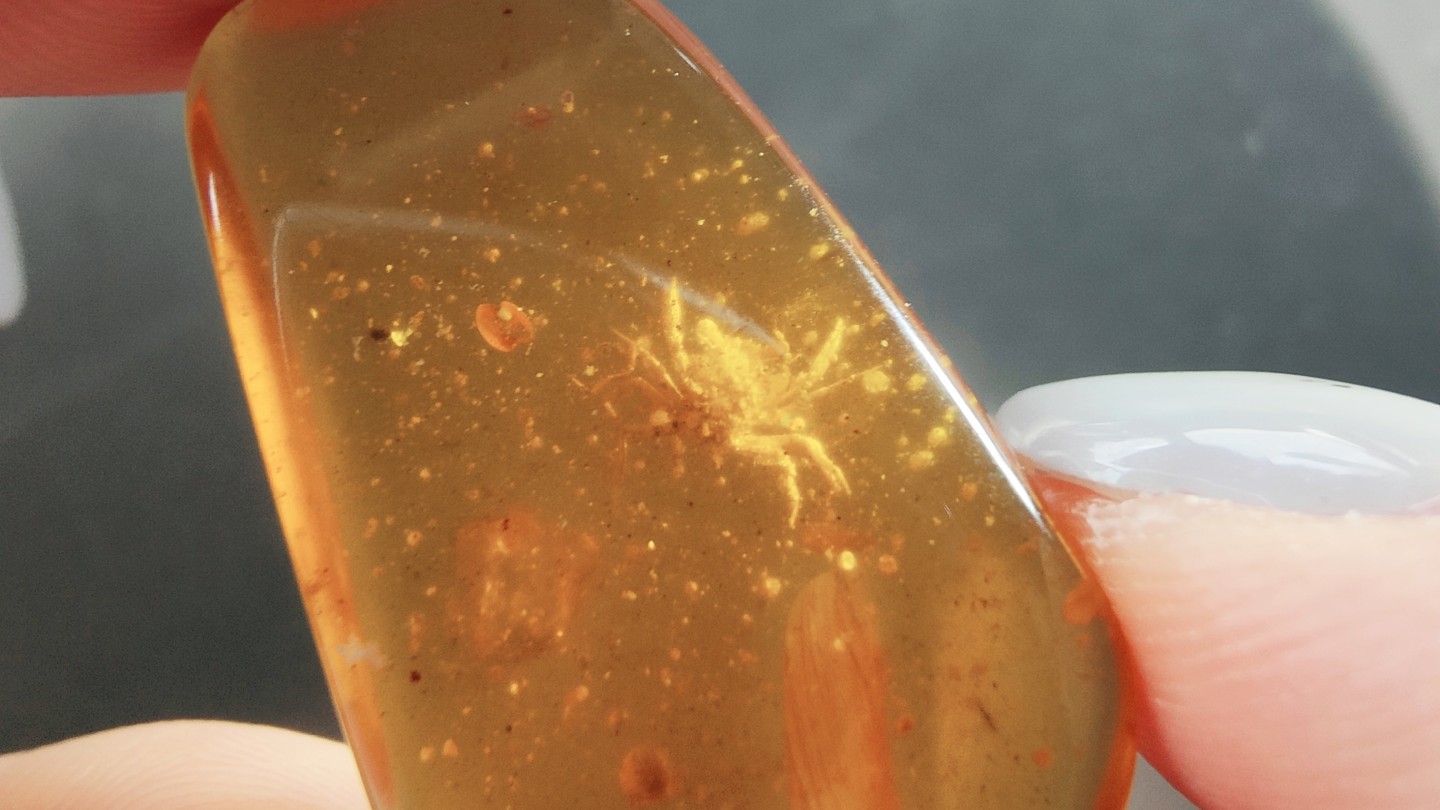Tiny 'immortal' crab entombed in amber discovered in a first of its kind
Scientists say it could represent a bridge between freshwater and marine species.

For the first time ever, scientists have discovered an "immortal" crab fossilized in amber. Dating back to the Cretaceous period, this perfectly-preserved crustacean might be among the earliest examples of a crab occupying a freshwater habitat.
Researchers named the newfound species Cretaspara athanata — "athanata" meaning "immortal;" "Cret-" for the Cretaceous; and "aspara" for the legendary Southeast Asian spirits of the clouds and water, an homage to its amphibious lifestyle and place of discovery.
Arthropods, like insects, spiders, scorpions and millipedes, show up preserved in amber on a fairly regular basis in the fossil record. On rare occasions, scientists stumble across something bigger, like a small bird or snake, trapped in a tomb of this hardened tree resin. What these species have in common, though, is that they're all land-dwelling animals.
Related: Photos: ancient crab is the strangest you've ever seen
Most crabs, on the other hand, spend their lives in the water — not nesting in trees or buzzing through the forest. "It's not very often you come across an aquatic animal in amber," Javier Luque, a postdoctoral researcher at Harvard University and co-author of the study, told Live Science.
At just a fraction of an inch (2 millimeters) across, the fossil crab is a minuscule but exquisitely preserved specimen. Oftentimes, paleontologists have the difficult task of trying to reconstruct an extinct animal from bits of bone or fragments of carapace. Not so in this case. "It's the entire animal," Luque said, "to the level of not missing a single hair on the legs or the mouth, which is mind-blowing."
Luque and his team used a type of X-ray scan called a micro-CT to create a 3D digital model of the crab in order to study its physiology in detail. Based on the shape of the legs and carapace, they determined that the tiny crustacean belonged to the same lineage as modern-day "true" crabs.
Sign up for the Live Science daily newsletter now
Get the world’s most fascinating discoveries delivered straight to your inbox.
Not all crabs are technically crabs. So-called false crabs — including hermit crabs, king crabs and porcelain crabs — are members of a group called Anomura, and they can be distinguished by the fact that they walk on three pairs of legs rather than four like true crabs in the group Brachyura.
Scientists believe that crab-like body plans — in both true and false crabs — have independently evolved at least five times in Earth's history, researchers wrote in March in the journal BioEssays. This convergent evolution has happened often enough that in 1916, the English zoologist Lancelot Alexander Borradaile coined a term for it: carcinization. The first crabs appeared around 200 million years ago in the early Jurassic period, and experienced a renaissance in the Cretaceous period, an event now known as the Cretaceous crab revolution.

The newly discovered crab dates to between 95 million and 105 million years ago, placing it squarely in the middle of the revolution. But that still leaves the mystery of how it wound up encased in amber to begin with. "I would guess that very likely it was a freshwater or semi-terrestrial crab," said John Campbell McNamara, an evolutionary physiologist at the University of San Paolo in Brazil, who was not involved in the study. "The idea that it's in amber is a good indication" that it lived partially on land and partially in freshwater, he added, since the coniferous trees that produced amber resin couldn't survive in close proximity to saltwater environments.
Luque agreed with that assessment. Based on its robust gills, the little crustacean appears to neatly fill a gap in the fossil record between marine and freshwater crabs.
The fossil was originally discovered by Burmese miners in Myanmar in 2015. Northern Myanmar has some of the richest fossil amber mines in the world. However, over the course of the past six years, a horrific wave of politically-motivated violence and genocide has engulfed the country, leading the Society of Vertebrate Paleontology to issue a moratorium on studying amber specimens collected after 2017. In a 2021 statement, the group extended the moratorium, citing further human rights violations by Myanmar's military during the force's recent coup. "As much as this is discouraging from a scientific standpoint," they wrote, "it is one readily actionable solution for us — the paleontological community — towards reducing our contribution to the ongoing humanitarian crisis."
Even though C. athanata was collected before the moratorium went into effect, Luque hopes that its discovery might help draw attention to Myanmar's struggle. "This is not something we should keep quiet," he said. "Before being scientists, we're humans."
The discovery was published Oct. 20 in the journal Science Advances.
Originally published on Live Science.

Joanna Thompson is a science journalist and runner based in New York. She holds a B.S. in Zoology and a B.A. in Creative Writing from North Carolina State University, as well as a Master's in Science Journalism from NYU's Science, Health and Environmental Reporting Program. Find more of her work in Scientific American, The Daily Beast, Atlas Obscura or Audubon Magazine.









